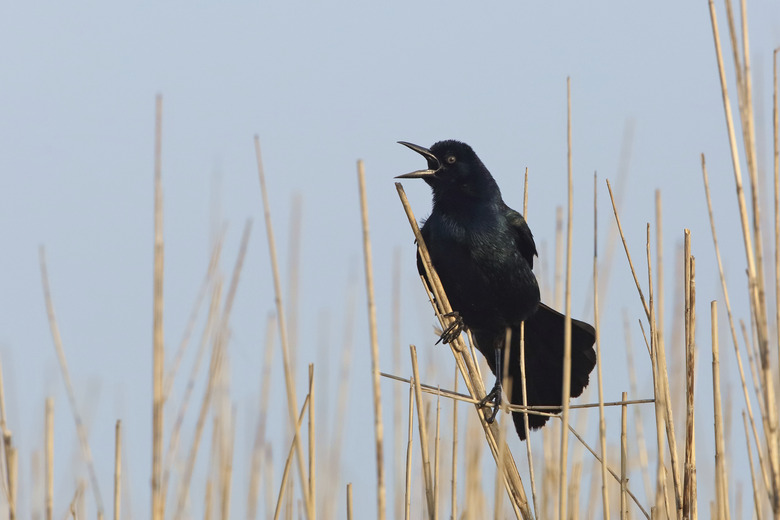When a black bird sweeps past your view, possibly snagging your discarded leftovers from lunch on the way, you’re likely to assume that bird was a crow. Gregarious, loud and perfectly at home in an urban setting, crows certainly take “common” to a new level. Grackles also share that mantle – and it can be difficult to tell the two birds apart.
What’s the Difference Between a Crow and a Grackle?
Telling the difference between a crow and a grackle can certainly pose a challenge! Both birds share a number of characteristics. Both crows and grackles have stark, black feathers, black legs and a matching black bill, and both even have iridescent feathers that shine with color in the sunlight. That iridescence provides you with your first clue when differentiating between the two types of birds.
Crows have a subtle iridescent sheen to their feathers, whereas most grackle species have iridescence that borders on dazzling blue. Female grackles aren’t quite as flashy as the males. In most species, female grackles sport dull brown plumage. Conversely, both male and female crows have the same black-colored plumage.
It’s in the Eyes
Eye color is another way to tell the difference between a crow and a grackle. Crows sport all black in more than just their plumage – with the exception of their young, which have blue eyes, crows have pure black eyes. Most species of grackles have yellow or pale gold-colored eyes. When you see a “crow” with yellow eyes, in most cases you’ve actually spotted a grackle!
Let’s Talk About It
Listening closely can also help you determine the difference between crows and grackles. The sounds that crows make, also known as vocalizations, are one of the most notorious of bird calls. Most people can easily identify the raucous “CAW!” of a crow anywhere. Grackles don’t share this signature sound. Instead, they use squeaks, whistles and croaks to call to one another.
You can listen to and compare the vocalizations of the Common Grackle and the American Crow to get a better sense of this important distinction between crows and grackles.
The Size Factor
Perhaps the easiest way to tell the difference between a crow and a grackle is their respective sizes. American Crows measure approximately 18 inches long and weigh an average of two pounds. These large black birds dwarf Common Grackles, which weigh just five ounces at their heaviest. That means that the heaviest American Crows can weigh four times as much as the heaviest Common Grackles!
Crow vs. Raven vs. Grackle
Family Matters
Perhaps the greatest distinction between grackles, crows and ravens is their family. Scientists classify crows in the Corvidae family. The Corvidae family, also known as the corvids, includes all crows, ravens and jays. Though the American Crow remains one of the most common and recognizable bird species in North America, the Corvidae family contains over 120 different species across the globe.
Grackles are members of the blackbird family, Icteridae. In addition to blackbirds, the Icteridae family includes cowbirds, orioles, meadowlarks and more. The Icteridae family contains over 100 different species of birds.
No matter the species, the differences between a crow and a grackle are visible in their size, appearance, vocalizations and their family within the animal kingdom.

